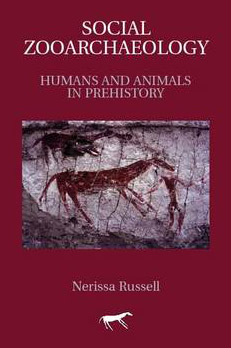Guilt, gender play major roles in human-animal relations
By Linda B. Glaser

Until recently, most archaeologists viewed human-animal relationships primarily in terms of their dietary role. But the social and symbolic functions of animals and meat may often be of equal or even greater importance, writes Nerissa Russell in her newly released book "Social Zooarchaeology: Humans and Animals in Prehistory" (Cambridge University Press). Russell, a Cornell associate professor and chair of anthropology, cautions that ignoring the importance of these factors results in interpretations of data "that are just plain wrong."
Animals have always played myriad roles in human societies: as wealth, companions, spirit helpers, sacrificial victims, totems, centerpieces of feasts, objects of taboos and more. But when Russell began writing "Social Zooarchaeology" a decade ago, few people paid attention to more than "protein and calories." While that has changed, Russell's book is the first to provide a systematic overview of social zooarchaeology, the study of past human-animal relations.

The deep feeling of kinship people have with animals is nearly universal, says Russell. "Animals are never neutral objects. Even in industrialized agriculture, people have very strong reactions about them."
In societies that rely on hunting, it's understood that being a good hunter requires thinking like the prey. But identifying closely with an animal you're going to kill does not lead to an easy conscience, especially when it's clear the animal has some level of sentience. As a result, guilt -- and how to deal with it -- underlies many human-animal relations, says Russell. She notes that sacrifices where the animal takes the place of the human and hunting rituals that put the hunter in the place of the hunted are responses to this guilt.
Gender, too, has played a major role in human-animal relations, according to Russell. Equating hunting with sex seems to be nearly universal ethnographically and historically, she says, adding that guilt and gender are pervasive themes throughout the book. It covers such topics, for example, as the metaphors of women as prey and hunter as lover, the identification of women with animals, and the resurgence of hunting or of art depicting hunting during times of change when gender roles are threatened.
Understanding the long history of human-animal relationships has relevance today, says Russell, who admits to frustration that most western discussions of animal and human relations are narrow in scope. "Either an animal is a pet or it's an object. A lot of the political impasses we get into that involve animals come from being only able to see those two categories."
"Social Zooarchaeology" is intended for reference and college classroom use. It has already been chosen as the text for an archaeology course being taught this spring at New York University.
Linda B. Glaser is staff writer for the College of Arts and Sciences.
Media Contact
Get Cornell news delivered right to your inbox.
Subscribe